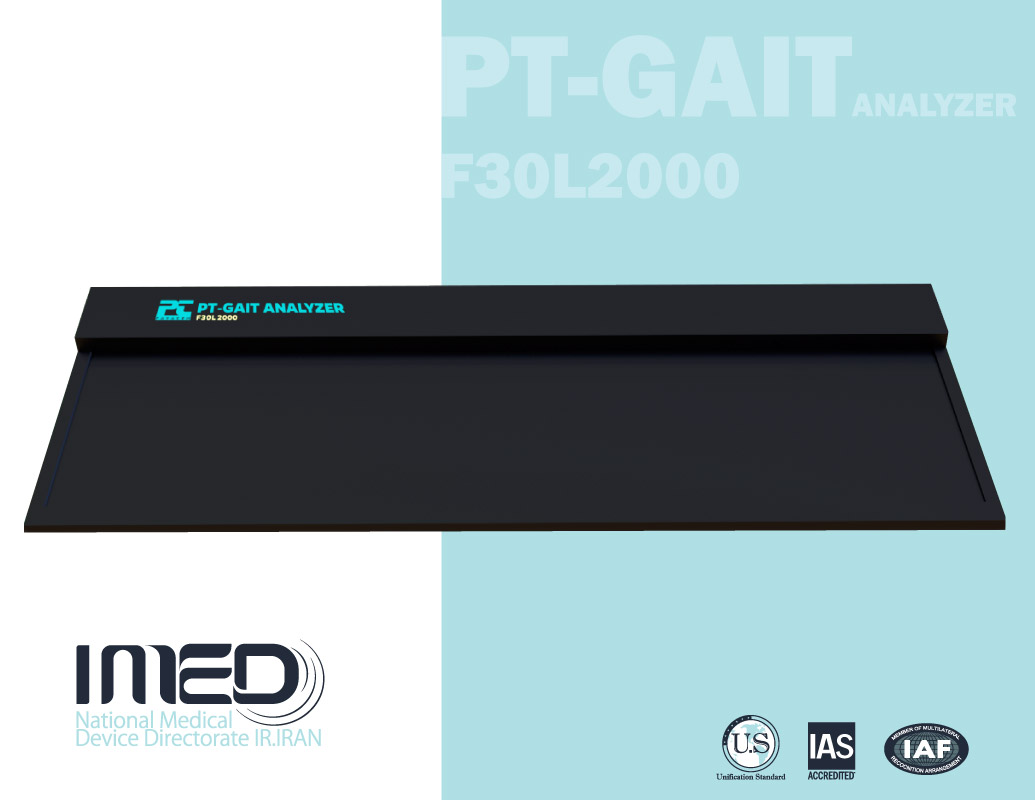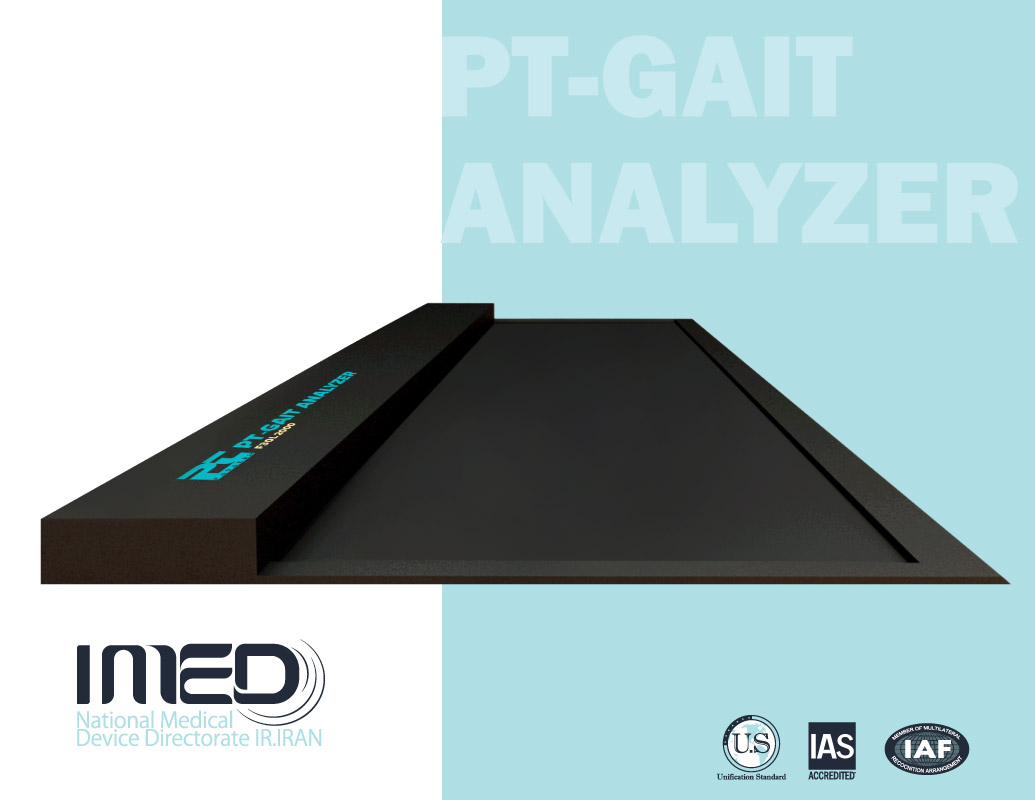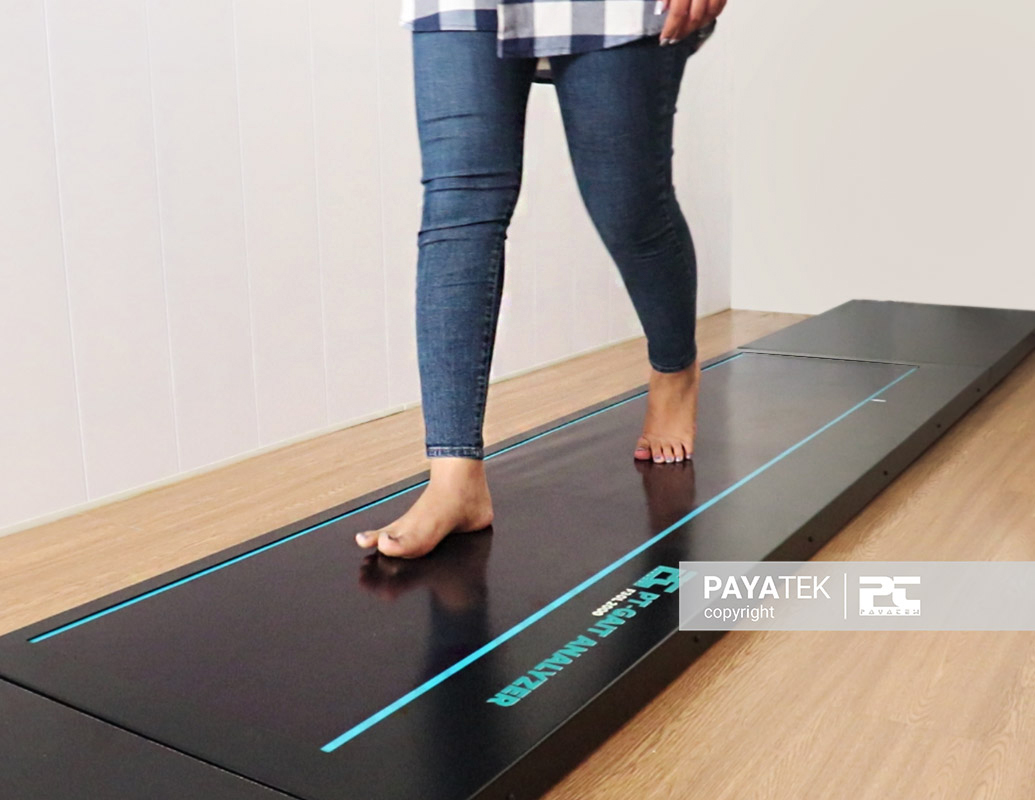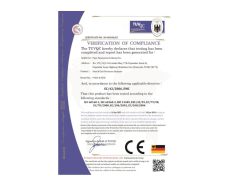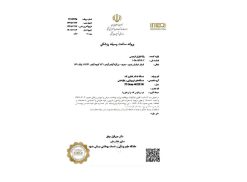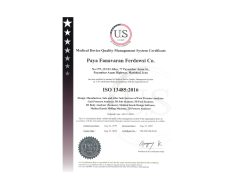Gait Analysis System
Gait analysis system | Strideway is designed to identify biomechanical abnormalities in the gait cycle through a systematic study of human movement. Using advanced measurement tools, it captures body movements and mechanics, providing quantitative and statistical data for each person’s walking cycle. This information is invaluable in sports, rehabilitation, and general health, helping specialists:
✔ Diagnose movement abnormalities or assess physical potential more accurately
✔ Develop effective treatment plans
✔ Evaluate the effectiveness of treatments over time
Strideway delivers objective insights by measuring:
✔ Plantar pressure and force distribution
✔ Time, distance, and movement parameters
All of these detailed assessments are provided in a single test, making Strideway a powerful tool for specialists in biomechanics, rehabilitation, and sports science.
ISO13485 certification
Electrical safety standard certification – IEC60601-1
EMI/EMC standard certification – IEC60601-2
————————–
Quick Online Contact
What is a Gait Analysis System?
The Gait Analysis System is an advanced tool designed to identify biomechanical abnormalities in the gait cycle through a systematic study of human movement. Using precise measurement tools, it captures body movements and mechanics, providing quantitative and statistical data about an individual’s walking cycle.
This information is invaluable in sports, rehabilitation, and general health, helping specialists:
✔ Diagnose movement disorders
✔ Detect hidden talents
✔ Develop effective treatment plans
Comprehensive Gait Assessment
Strideway delivers objective insights by measuring:
✔ Plantar pressure and force distribution
✔ Time, distance, and movement parameters
✔ Gait cycle efficiency and abnormalities
PT-GAIT: High-Speed Precision for Advanced Analysis
The PT-GAIT Gait Analysis System features a high-speed sensor system that significantly improves diagnostic accuracy and treatment evaluation across multiple fields, including:
✔ Rehabilitation
✔ Sports medicine
✔ Physiotherapy
✔ Pain analysis
✔ General health assessments
As an advanced and more comprehensive version of the PT-SCAN Foot Pressure Scanner, the PT-GAIT system offers higher precision, utilizing 12,000 pressure sensors operating at 100 frames per second to analyze walking and running dynamics in real time.
Key Benefits of PT-GAIT:
✔ Accurate diagnosis of movement disorders
✔ Effective treatment planning & evaluation
✔ Enhanced rehabilitation & sports performance analysis
✔ Detailed assessment of pain and posture mechanics
The PT-GAIT system is an essential tool for healthcare professionals, physiotherapists, and sports scientists, ensuring a data-driven approach to optimizing movement and preventing injuries.
PT-GAIT Analysis System (Strideway) – Key Features
Multi-Step Capture & Customizable Sensing Area
- Records multiple footsteps in a single pass
- Allows users to select a specific sensing area for in-depth analysis
Comprehensive Gait Parameter Analysis
- Automatically calculates key gait metrics such as step and stride time, distance, velocity, and cadence
Automated Foot Strike Detection
- Identifies left and right foot strikes
- Tracks the number of stances from first to last
Advanced Foot Segmentation & Balance Analysis
- Assesses toe-in and toe-out angles, inversion-eversion movements, and other biomechanical data
- Integrated Balance Screen Report for comprehensive postural assessment
Full Stance & Swing Phase Analysis
- Evaluates both phases of the gait cycle (stance and swing)
- Covers one or two steps for precise movement tracking
Scientific & Clinical Data Representation
- Displays results in time-pressure graphs and raw Excel data for further research and analysis
Detailed Pressure Distribution & Force Diagrams
- Visualizes pressure, force levels, and distribution for each foot
Multi-Mode Testing Capabilities
- Performs tests in static, dynamic, and balance scan modes
Center of Pressure (COP) Path Tracking
- Displays the COP trajectory throughout the walking cycle
Why Is Gait Analysis Important?
An abnormal gait pattern can result from illness, injury, or musculoskeletal disorders, leading to pain in the pelvis, spine, neck, legs, knees, or ankles. Identifying and correcting these abnormalities is crucial for improving mobility, posture, and overall well-being.
The Gait Analysis System provides a comprehensive evaluation of how an individual stands and walks, offering valuable insights into biomechanical function and movement efficiency.
How Gait Analysis Helps:
✔ Identifies the Root Cause of Muscular, Neurological, or Skeletal Issues
✔ Pinpoints the Source of Pain While Standing or Walking
✔ Diagnoses Bone Deformities and Skeletal Misalignments
✔ Detects Muscle or Nerve Dysfunction
✔ Monitors the Progression of Conditions like Osteoarthritis & Muscular Dystrophy
As a non-invasive diagnostic tool, gait analysis plays a vital role in detecting medical conditions, determining the need for further testing, and guiding personalized treatment plans.
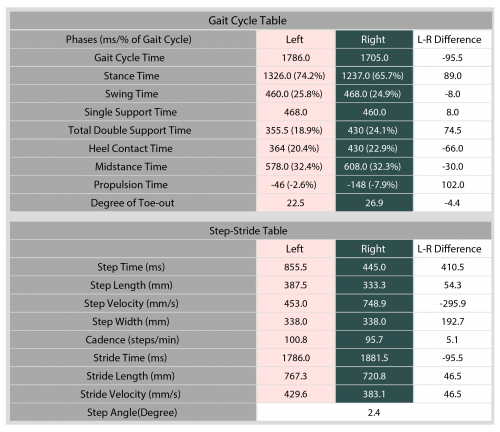

The Gait Analysis System is an essential tool for evaluating movement patterns and selecting the best treatment approach for gait correction, ensuring improved mobility and long-term musculoskeletal health.
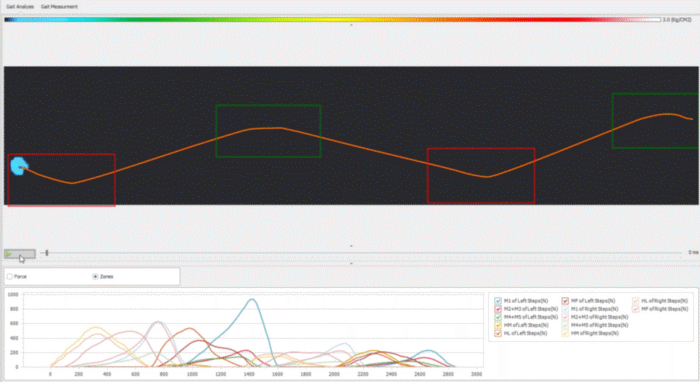

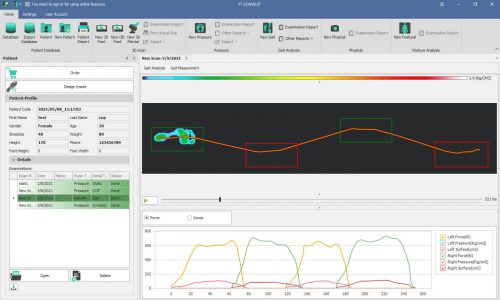

Who Can Benefit from a Gait Analysis System?
A gait analysis system provides quantitative and statistical data on an individual’s gait cycle, offering invaluable insights for healthcare and sports professionals. This data aids in the accurate diagnosis of movement abnormalities, identification of hidden talents, creation of effective treatment plans, and monitoring patient progress to assess treatment effectiveness.
The gait analyzer evaluates how the body moves while walking or running, detecting any irregularities in movement. Since walking involves a complex interaction between the visual, sensory (pain, pressure, temperature), and skeletal systems, disruptions in any of these areas—or issues with related joints—can result in abnormal gait patterns.
Specialists Who Use Gait Analysis Systems:
- Physiotherapists – Assess and rehabilitate movement disorders.
- Rehabilitation & Occupational Therapists – Aid in restoring functional mobility.
- Orthopedic Surgeons – Diagnose and treat musculoskeletal abnormalities.
- Neurosurgeons – Evaluate and treat neurological disorders affecting gait.
- Sports Talent Scouts – Identify athletic potential based on movement efficiency.
Additionally, gait analysis systems are beneficial for:
- Pain Medicine Specialists – Analyze movement-related pain patterns.
- Corrective Exercise Specialists – Improve movement biomechanics.
- Prosthetics & Orthotics Experts – Design assistive walking devices and custom orthotics.
What Is the Difference Between a Gait Analysis System and a Foot Pressure Scanner?
Both the PayaTek Gait Analysis System and the Foot Pressure Scanner measure foot pressure distribution, but the Gait Analyzer offers a more advanced and comprehensive assessment of movement and biomechanics.
Key Differences:
Comprehensive Gait Analysis vs. Foot Pressure Scanning
The Gait Analysis System evaluates foot pressure distribution under static (standing), dynamic (walking), and balance conditions.
Beyond pressure measurement, it provides a detailed biomechanical assessment, analyzing:
- Body center of gravity shifts
- Step and stride lengths
- Two-foot phase differences
- Detailed kinesiological diagrams
In contrast, the Foot Pressure Scanner is effective for basic pressure mapping but lacks the capability to perform biomechanical movement analysis or a full gait cycle evaluation.
Advanced Sensor Technology & Higher Accuracy
The PT-GAIT Analyzer is equipped with 12,000 sensors operating at 100 frames per second, enabling high-speed, high-precision foot pressure scanning during standing, walking, and running.
In contrast, foot pressure scanners can only capture a single step during walking and cannot analyze the full running cycle, limiting their ability to assess continuous movement patterns and dynamic gait changes.
Simultaneous Multi-System Integration
The Gait Analyzer enables specialists to simultaneously monitor foot pressure distribution, body center of gravity shifts, and gait cycle data in real time. It seamlessly integrates with video imaging and can connect to medical devices such as EMG and EKG, allowing for comprehensive neuromuscular and cardiovascular assessments.
In contrast, foot pressure scanners lack these advanced integration capabilities, often requiring separate tests and additional equipment for deeper analysis.
Ease of Use & Natural Movement Capture
The Gait Analyzer functions as a walking track, allowing individuals to walk or run naturally without the need for conscious step adjustments. This ensures realistic, error-free data collection, accurately reflecting natural gait patterns.
In contrast, foot pressure scanners, typically measuring around 50 cm × 50 cm, have a limited surface area, preventing them from capturing multiple consecutive steps. As a result, test subjects often modify their steps intentionally to ensure proper foot placement on the sensor platform, which disrupts natural movement patterns and reduces data reliability.
Additionally, some individuals may pause or adjust their posture before stepping onto the mat, further distorting gait data. To counteract this, specialists must train subjects, repeat tests multiple times, and visually monitor foot placement.
The Gait Analyzer eliminates these challenges with a larger platform (available in 1.2m and 2m models), allowing individuals to walk naturally along a predefined path without forced step adjustments. This results in higher accuracy and more reliable gait data for clinical assessments, rehabilitation, and sports performance analysis.
Efficiency & Clinical Application
The Gait Analyzer scans quickly and accurately, capturing detailed movement data for both feet simultaneously. This makes it ideal for high-traffic clinics that handle multiple patients daily, improving efficiency without compromising accuracy.
Additionally, the output from the PT-GAIT Analyzer, like the PT-SCAN Foot Pressure Scanner, can be seamlessly integrated into orthotic design software, enabling the precise customization of medical insoles.
How Is the Gait Analysis Test Performed?
The PayaTek Gait Analyzer is designed as a walking track, allowing patients to walk naturally while the system records key biomechanical data. During the test, the patient takes 3 to 5 steps along the track. Beneath the walking surface, an array of embedded pressure sensors continuously measures:
✔ Dynamic pressure distribution from the foot sole to the mat
✔ Center of Pressure (CoP) throughout the gait cycle
✔ Step length and duration
✔ Foot and toe angles
✔ Spacing between feet
These parameters are then analyzed and presented in detailed motion graphs and statistical reports, providing specialists with precise insights into the patient’s walking mechanics, posture, and movement efficiency.
PayaTek Gait Analysis System Report
The PT-GAIT Analysis System provides a comprehensive and detailed assessment of gait mechanics through dynamic reports that include:
✔ Real-Time Moving Graphs & Charts – Visual representation of gait patterns
✔ Foot & Force Chart – Displays pressure distribution and force exertion
✔ Gait Cycle Table – Detailed breakdown of each phase of the walking cycle
✔ Step & Stride Table – Measurement of step length, stride length, and timing
✔ Balance Screen – Evaluation of stability and weight distribution
✔ Colorful Foot Pressure Maps & Graphs – Visualization of plantar pressure variations
✔ Exact Foot Dimensions – Precise measurements for foot morphology analysis
✔ Contact Percentages – Analysis of foot contact time distribution
✔ Foot Axis & Foot Type Analysis – Evaluation of foot alignment and classification
✔ Arch Index – Identification of flat feet, high arches, or normal arch height
✔ Zone Force Analysis – Pressure mapping across different foot regions
✔ COP (Center of Pressure) Coordinates – Tracking weight shift and balance control
Additionally, the system provides advanced biomechanical insights, ensuring a comprehensive, data-driven evaluation of gait patterns for clinical diagnosis, rehabilitation, and performance analysis.
How the PT-GAIT Analysis System Can Help
The PT-GAIT Analysis System provides detailed biomechanical insights, assisting specialists in diagnosis, treatment planning, and progress monitoring. Its advanced technology enables:
✔ Tracking the Center of Pressure (CoP) Trajectories
Analyzes CoP movement during stance phases to assess balance and weight distribution.
✔ Monitoring Disease Progression
Tracks the advancement of osteoarthritis, muscular dystrophy, and other neuromuscular disorders.
✔ Identifying Muscular, Neurological, and Skeletal Issues
Detects musculoskeletal imbalances, aiding in early diagnosis and intervention.
✔ Locating the Source of Pain
Determines whether pain originates from posture, gait abnormalities, or pressure imbalances.
✔ Diagnosing Bone Deformities & Skeletal Mismatches
Evaluates skeletal alignment and identifies structural abnormalities.
✔ Assessing Plantar Pressure Distribution
Captures detailed plantar pressure profiles, helping detect uneven weight distribution.
✔ Measuring Force & Pressure Time Integrals (Impulse)
Provides quantitative data on foot mechanics for movement efficiency evaluation.
✔ Detecting Muscle or Nerve Dysfunction
Identifies neuromuscular irregularities affecting gait and movement.
✔ Monitoring Treatment Effectiveness
Tracks rehabilitation progress and helps refine treatment strategies over time.
| گارانتی |
|---|
Specification
| Technology | Resistive sensor |
| Number of sensors | 11440 sensors in a 52*220 matrix |
| Spatial resolution | 1.4 sensors/cm2 |
| Sensing area | 200 x 40 cm |
| Data resolution | 12 bits |
| Pressure range | 0.5 to 100 PSI |
| Data reception frequency | 60 up to 100 Hz |
| Hysteresis | <3% |
| Sensing area height | 0.7 cm |
| Weight | 15 kg |
| OS | Windows x64 8/8.1/10/11 |
| Connection | USB2/USB3 |
| Ambient operating temperature | +30 to -15 Celsius |


